Estrogen dominance happens when your body has too many estrogen and not enough progesterone to balance your levels.
Introduction to DIM for Estrogen Dominance
So, if you are a woman over 40 years old, chances are you could greatly benefit from an estrogen balancing supplement called DIM, (diindolylmethane.)
DIM is a food-based compound found in cruciferous vegetables like broccoli, cabbage, cauliflower and Brussel sprouts. Studies have shown DIM has the ability to reduce the risk of certain cancers, especially those influenced by excessive estrogen levels, such as breast, uterine and prostate (so yes, DIM is good to give to your husbands too!)
And if you are struggling to lose stubborn perimenopause pounds, it’s good to know DIM can also stimulate fat breakdown and encourage an increase in muscle mass.
Stay tuned, I’m going to share more about DIM and a few other helpful supplements in a few minutes.
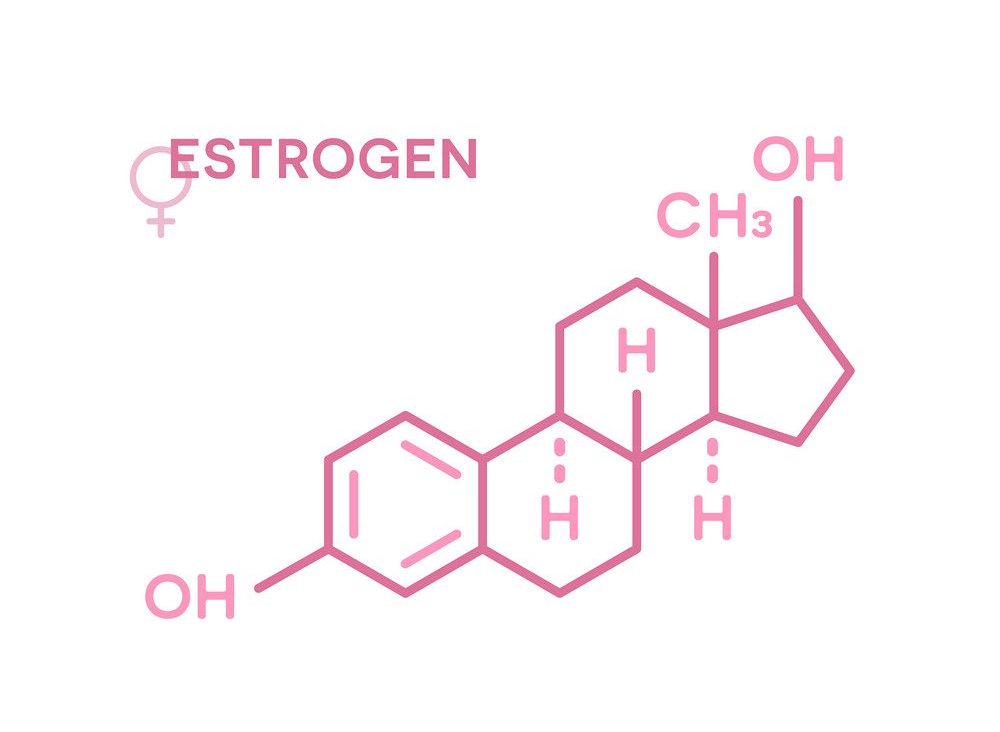
10 Causes of Estrogen Dominance
It’s not just aging ovaries, but lifestyle factors also play a huge role in estrogen dominance. In addition to taking an estrogen balancing supplement such as DIM you also want to do your best to avoid the following leading lifestyle factors that drive estrogen levels up in both women and men.
Here are 10 things (that at least you have some control over!) that can worsen your body’s natural tendency toward estrogen dominance that occurs with age:
1. Eating a diet rich in animal foods.
It is especially important to avoid commercially raised animals exposed to hormones. Even the antibiotic given to commercially raised poultry can contribute to hormone disruptor exposure. It is NOT just the hormones in animal foods, but the type of bacteria cultivated in the gut by women who eat a lot of meat.
Meat consumption raises your estrogen. Overall, more meat consumption is associated with less fiber consumption, which raises bad estrogens and grows the wrong bacteria in your gut.
2. Eating commercially grown fruits and vegetables containing pesticides.
Pesticides contain known hormone disruptors.
3. Dairy Intake.
Estrogens are unavoidable hormones if you drink cow’s milk. In fact, the main source of animal-derived estrogens (60–70%) in the human diet is milk and dairy products. I admit, I do still eat a wee bitty bit of cheese, but in addition to the hormones, here is why I don’t drink milk.
4. Obesity
Estrogen is fifty to one hundred times greater in overweight menopausal women than in lean women, because fat cells also produce estrogen, and that likely accounts for the greater risk in breast cancer associated with being overweight and female.)
5. Inactivity.
Exercise decreases “bad” estrogen levels and helps your body make more of the “good” estrogens.
6. Deficiency of Vitamin B6 and Magnesium.
Both of these are necessary for the neutralization of estrogen in the liver. Too much estrogen also tends to create deficiencies of zinc, magnesium and B vitamins. These are all important constituents of hormonal balance.
7. Excessive intake of sugar, fast food and processed food.
Intake of these leads to a depletion of magnesium. In addition, consumption of refined carbohydrates can lead to insulin resistance and chronically high insulin increases estrogen.
8. Chronic Stress.
Stress causes adrenal gland exhaustion in combination with reduced progesterone, which tilts the progesterone to estrogen ratios in favor of estrogen.
9. Excessive Caffeine Consumption.
Caffeine intake from all sources is linked with higher estrogen levels regardless of age, body mass index (BMI), caloric intake, smoking, alcohol, and cholesterol intake.
Studies have shown that women who consumed at least 500 milligrams of caffeine daily, the equivalent of four or five cups of coffee, had nearly 70% more estrogen during the early follicular phase than women who consume no more than 100 mg of caffeine daily, or less than one cup of coffee.
10. Excessive Alcohol (Wine) Consumption.
Alcohol of any type, including wine, raises estrogen.
Estrogen Dominance Symptoms
Just reading the symptoms of estrogen dominance below will have you running to pick up a bottle of the estrogen balancing DIM supplement! But in all seriousness, if you have any of the symptoms below, chances are you too could have estrogen dominance….
Weight gain (particularly in hips, midsection, thighs)
Fibrocystic breasts
Fibroids
Endometriosis
Abnormal menstruation
Fatigue
Reduced sex drive
Anxiety
Bloating
Breast tenderness
Mood swings
Brain fog
Insomnia
Feeling low (you might not be depressed, but you’ve lost your “spark”)
Migraines
Gallbladder problems
Importance of Balancing High Estrogen
Even though I do just about everything humanly possible to stay healthy and even though I have not changed anything about my diet or exercise regimen in years, on some level I have been aware that my hormones have been changing for the last year or so.
Although I have had plenty of other health issues, thankfully PMS had never been on the list until after I turned forty. My PMS symptoms were very mild–mostly mood changes and breast tenderness at first– so I didn’t get too worked up about it initially.
But when the debilitating monthly migraines began I decided I had better get my hormones tested…
Estrogen Dominant
Considering I eat a plant-rich clean food diet, I was shocked when my hormone results indicated estrogen dominance. And it didn’t just happen overnight. Estrogen dominance starts to occur during the early perimenopausal transition. Apparently I am in this transition.
I am also not alone. In fact, estrogen dominance is a BIG deal these days. While sex hormones such as estrogen and progesterone decline with age gradually, there is a drastic change in the rate of decline during the perimenopausal and menopausal years for women in these two hormones.
As Dr. Lam explains on his website, estrogen and progesterone work in synergy. It is important to realize hormones will naturally change with age, and in your 40’s you can’t expect to have the estrogen and progesterone levels when you were in your 20’s.
What I can do is strive to keep my hormones in balance. With a slow and steady decline in estrogen that naturally occurs over the years coinciding with a dramatic drop in progesterone that also happens with age, there is insufficient progesterone to counteract the amount of estrogen in our body as we age. This state is called estrogen dominance.
It is not the absolute deficiency of estrogen or progesterone but rather the relative dominance of estrogen and relative deficiency of progesterone that is the main cause of health problems when they are off balance.
If I Can Be Estrogen Dominant Than Anyone Can Be
I admit I do drink a glass of wine each night (and I still stand by the research showing moderate wine consumption is healthy) and I do still drink a cup of coffee plus maybe 2 additional caffeinated teas of some sort a day along with a little bit of cheese here and there.
I definitely do not eat refined sugar or processed foods though. and choose to eat a mostly plant-based diet and the animal foods I do eat are all the cleanest, highest quality possible. In addition, I don’t drink milk and take supplements with vitamin B6 and magnesium. I exercise three to four times a week. Also, I am not overweight.
So, if I can be estrogen dominant then anyone can be. Unless I suppose you live 100% “perfect”… which we know is not possible.
How Did Estrogen Dominance Happen to Me?
I am pretty sure in my case it must be the exposure to environmental estrogen-like hormones (xenoestrogens) that are literally everywhere in the modern environment.
Many petrochemical compounds found in general consumer products have chemical structures similar to estrogen and act like estrogen in our body. Even car exhaust, dry-cleaning chemicals, plastics, industrial waste such as PCB’s and dioxins are all sources of xenoestrogens.
The concern over phthalates and bisphenol-A (BPA) is REAL. Even mercury (from seafood, amalgam dental fillings, etc.) can act like a xenoestrogen by binding to your estrogen receptors.
But don’t feel bad ladies, it’s not just happening to us. Men don’t have it any easier. Xenoestrogens are “his” and “her” endocrine disruptors. Xenoestrogens are not just disrupting women’s hormonal balance, they are also wreaking havoc on men’s sperm count and prostate cancer rates.
As Dr. Sarah Gottfried points out in her book, The Hormone Cure (see photo below—I can’t recommend this book more highly by the way), this is not some conspiracy theory. Study after study shows that xenoestrogens can cause estrogen dominance. I would not have believed it had it not happened to me.
The point is, even if you eat clean and live healthy clean lifestyle, chances are if you are over forty and living in our xenoestrogen-saturated environment, you could benefit from taking the estrogen balancing supplement DIM.
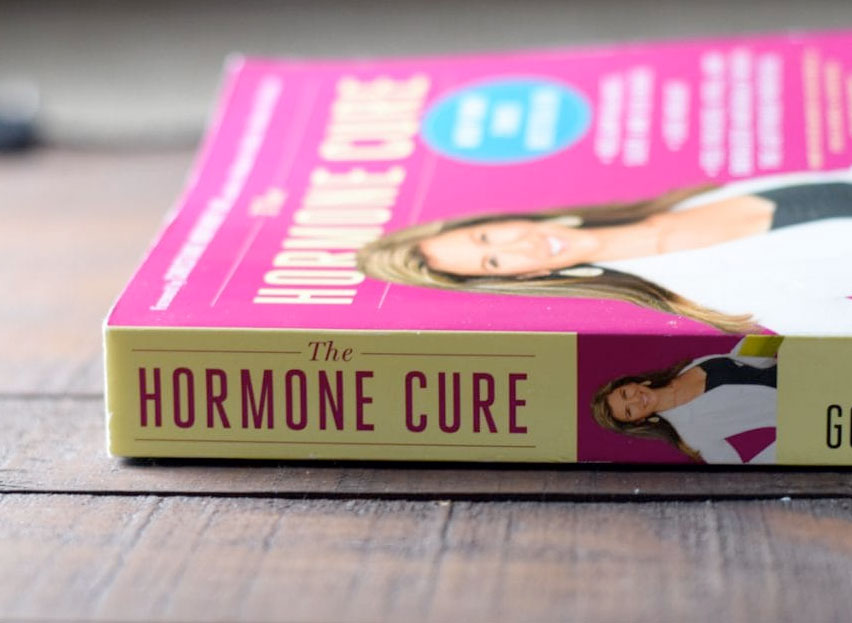
How to Balance Estrogen Dominance
Knowing what I now know about environmental estrogens as well as the tendency for the body to become estrogen dominant with age, I wish I had added the estrogen balancing supplement DIM to my regimen years ago. But it’s never too late!
A Natural Way to Balance Estrogen
The estrogen balancing supplement DIM is the most powerful promoter of the 2-hydroxylase, the enzyme that helps encourage production of the “good” estrogen while lowering your production of the “bad” estrogen.
In other words, DIM is a natural hormone balancer that has been shown to reverse estrogen dominance. There is plenty of research showing both safety and effectiveness of DIM, and one randomized trial showed significant improvement in abnormal Pap smears among women given DIM versus a placebo.
How to Take DIM
Since DIM is found naturally in cruciferous vegetables such as broccoli and cauliflower, you might think you could just starting eating more broccoli (my dairy free “cream” of broccoli soup is a tasty way to get the job done!)
But unfortunately you would need to eat A LOT of cruciferous vegetables to even come somewhat close to getting the therapeutic level of 150 to 200 mg of DIM found in supplementation.
Supplementing with DIM has been proven to be safe and effective so I have officially added it to my supplement regimen. I’m also giving it to my husband. And yes, it is safe for men. Keep in mind, men live in the same xenoestrogen-saturated world we live in and it is every bit as unhealthy for a man to be estrogen dominant as it is a woman.
How Long Does it Take for DIM Supplement to Work in Your Body?
It typically takes about 30 days for DIM supplement to start working in your body to balance estrogen. I always recommend buying 45-60 days worth of supplements and make a note on the calendar when you began. Then, when you get to the 45 day mark, you should see some changes.
What Brand of DIM?
Since I am new to this, I am trusting the recommendation Dr. Sarah Gottfried makes on page 367 of The Hormone Cure and going with the patented version made by BioResponse Nutrients (see image below.) BioResponse has been shown to be the most stable, bioavailable and effective.
How Much DIM to Take?
150 to 200 mg DIM daily.
Calcium D-Glucarate to Reduce High Estrogen
A few year ago I had been experiencing many of the symptoms that Ivy described above. I started taking DIM from BioResponse but was met with great headaches and an overall achiness.
Naturally, because who likes to be uncomfortable… I stopped taking it. Then, my estrogen dominance went up again and this time, I really had no choice buy to try DIM again.
This time, I did some research to see if anyone else felt terrible the first few days on DIM. Luckily, I ran across this article by Smoky Mountain Nutrition that shares, in great detail about headaches and a rough first few days.
There is hope!
You can battle this by taking a supplement called Calcium D-Glucarate. The first day I took DIM this last round, I was an absolute wreck. But the Smoky Mountain article gave me some hope that with a little help from Calcium D-Glucarate, I could get through the “detoxing” symptoms and be okay.
They were right, once that supplement arrived and I started pairing it with my BioResponse DIM at night, I have been waking up eager to start the day with no more terrible body ache or headache symptoms.
How to Reduce Estrogen Dominance Naturally
If you are wondering if I am going to do anything other than add DIM to my regimen the answer is yes! I won’t go into everything in this blog post, but if you are interested in hearing more of what I do please be sure to subscribe to my newsletter at the bottom of this blog post. In the meantime, here are a few additional things I am going to start doing:
#1: To help my body manage stress, I am going to consistently take an adaptagen supplement daily.
#2: To balance my “good” and “bad” estrogen and get more estrogen-flushing fiber, I’m going to go back to eating 2 tablespoons of ground flaxseeds a day.
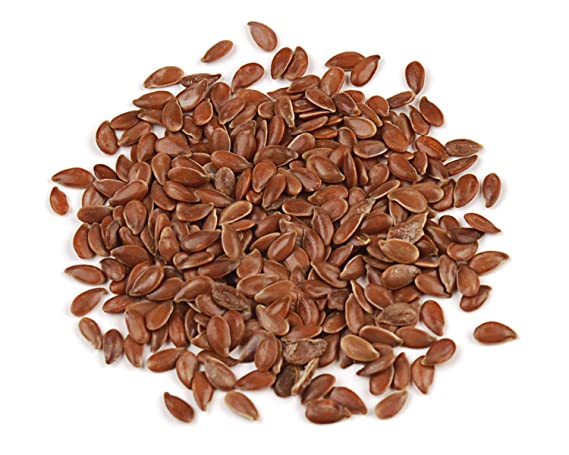
I had switched to eating chia because both chia and flaxseeds deliver a good source of plant-based omega-3’s, but for hormonal health I think flaxseeds have chia seeds beat.
#3: I’m going to consistently add 1 teaspoon of vitamin C-rich camu powder to my smoothie each day.
I’ve written about camu before and how it can help your body handle stress, but I had no idea until recently that the the mega-dose of vitamin C that camu supplies could help boost my progesterone levels, which will balance my estrogen.
In fact, I just learned after reading The Hormone Cure that nutraceutical treatment with vitamin C for low progesterone has been proven to be effective at a dose of 750 mg of vitamin C daily. One teaspoon of camu powder contains a whopping 1180% of your Daily Value for vitamin C, which is just a shade under 750 mg.
But, I prefer camu to vitamin C supplements because camu is a real food, so it contains a full spectrum of the naturally occurring bioflavonoids your body needs in order to properly utilize and metabolize vitamin C. Camu powder also supplies a nice dose of potassium and beta carotene along with amino acids and phytonutrients. (
I will keep you all posted! In the meantime, if you have any recommended resources, personal stories or anything else related to estrogen balancing supplements, perimenopause or female hormonal health please leave a comment and tell me all about it! This is definitely a subject I have a newfound interest in 😉
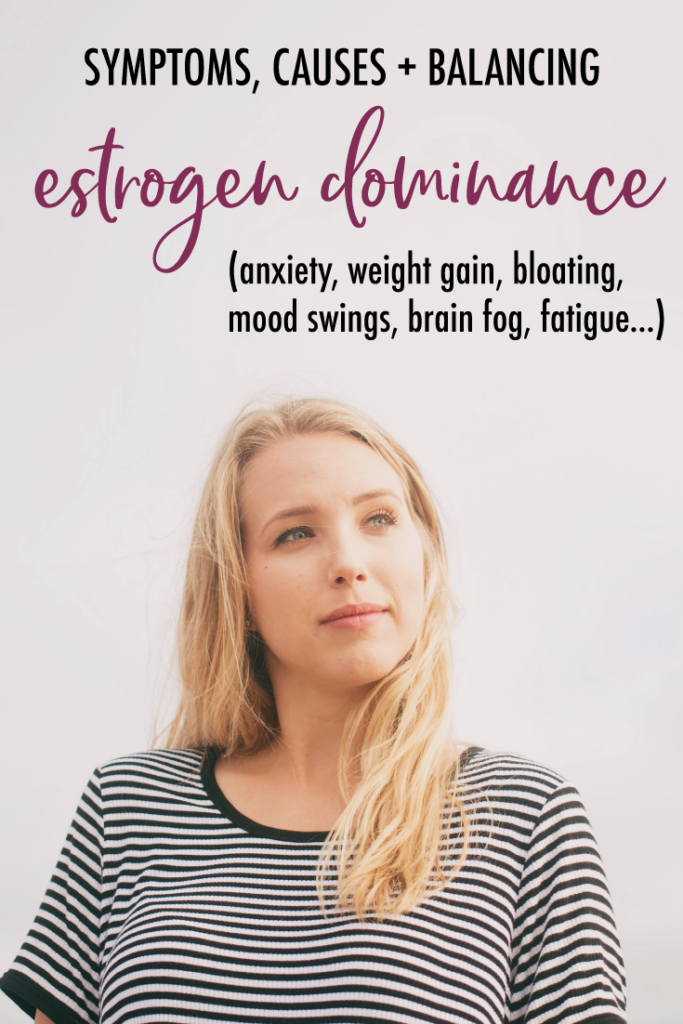

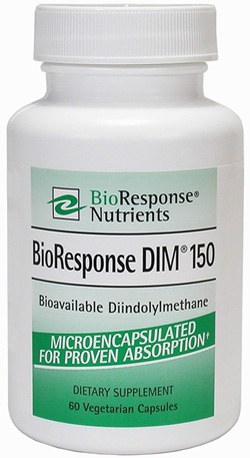
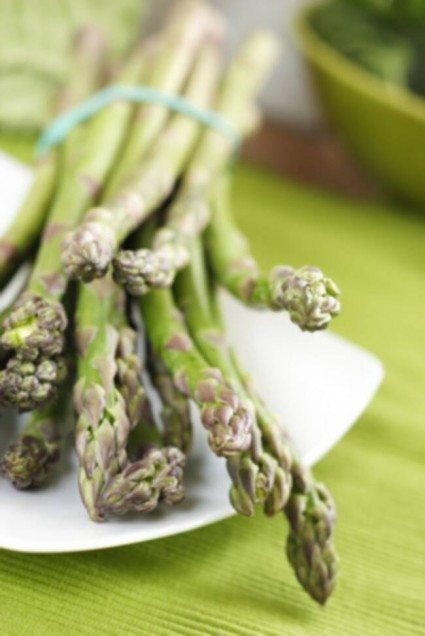
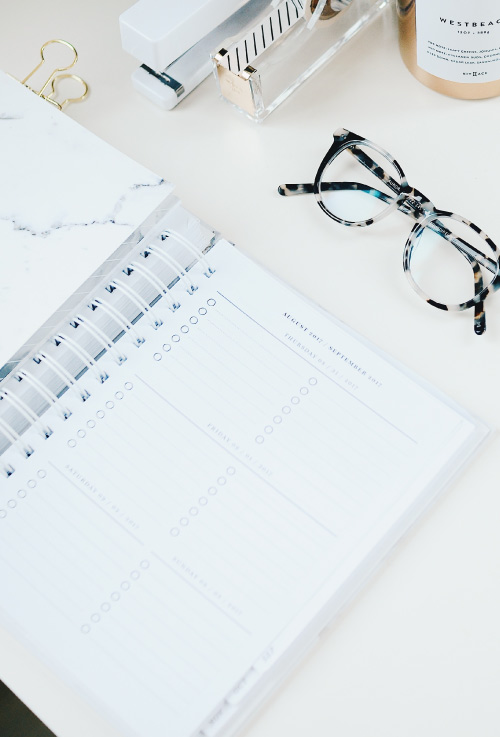

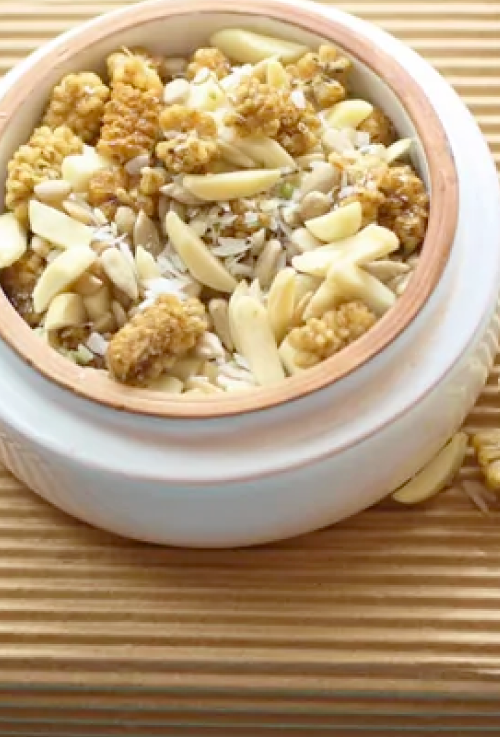

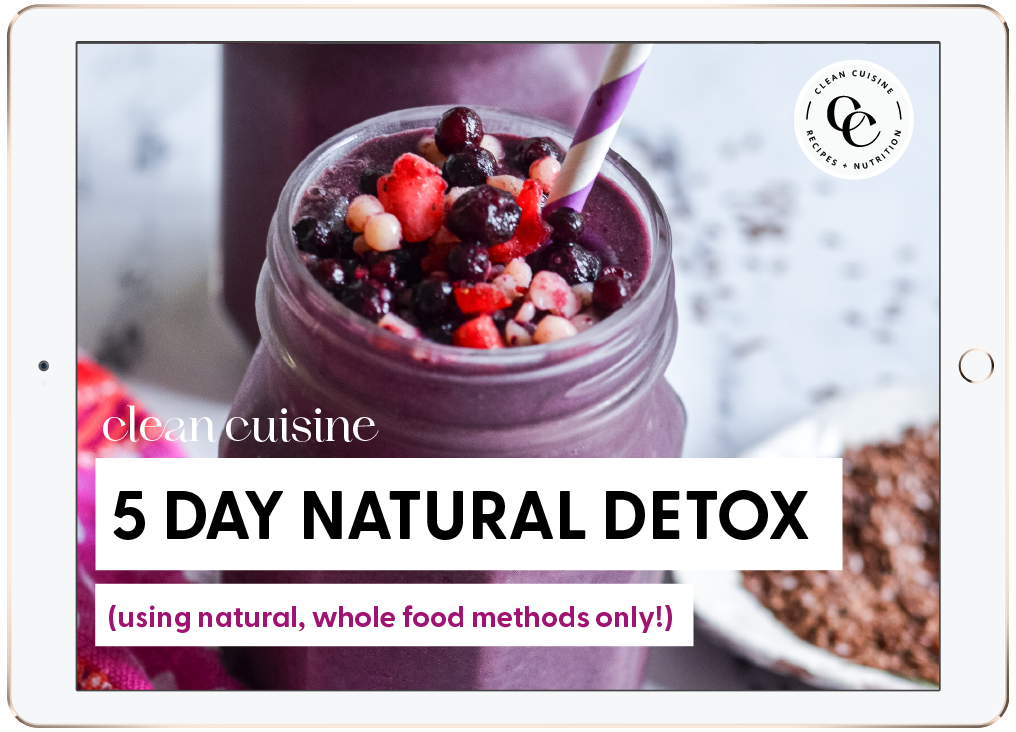
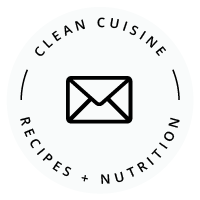
Chrystal
Sunday 3rd of April 2022
Excellent article! Thank you so much for your help and insight! I also enjoy the book "The Mood Cure" and recommend 5-HTP supplementation at night for a tone struggling with low serotonin induced depression and sugar cravings which are often hand in hand with hormone issues. Two additional hints for those with auto-immune or fibroids/endometriosis #1 stop eating ALL nightshades (potatoes, tomatoes, eggplant, peppers) - these can increase inflammation and pain response and #2 - stop eating store bought eggs (the grains and soy they are fed affect some women very strongly). I have done well following a paleo style diet. Thank you again for your insight. Do you recommend taking DIM on an empty stomach or with food? Thank you ♡♡♡
Madison Suttles
Monday 4th of April 2022
Hi Chrystal,
Thank you for your feedback on this article, and for your insight for those with autoimmune issues! I personally avoid nightshades as well, which was one of the final steps that helped me abolish my chronic joint pain. We also totally agree on eggs being superior when sourced from pastured hens. Great advice!
I take DIM with food to avoid any potential stomach upset, but as the bottle doesn't state what's best, I would definitely address this with your doctor to find what's best for you.
Have a great day, Madison